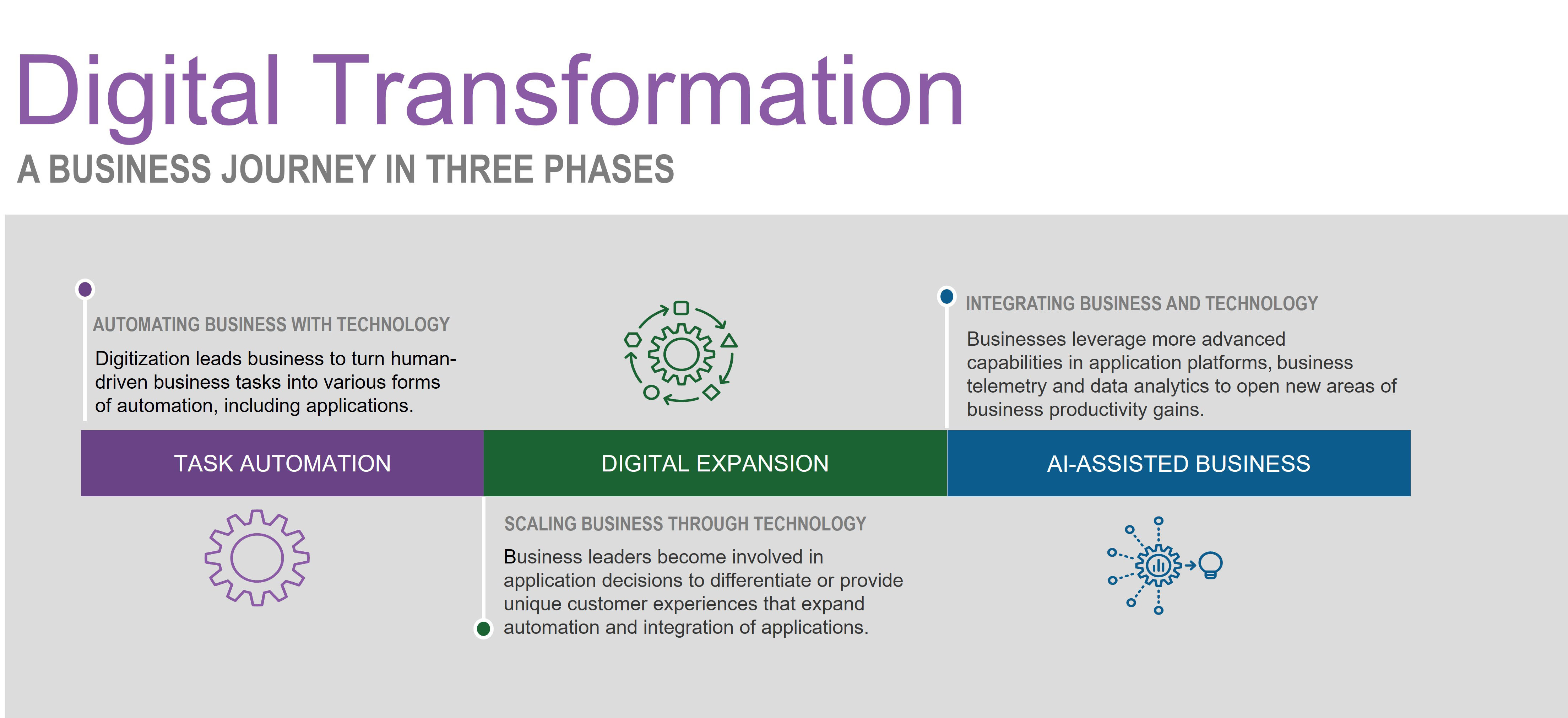Digital Transformation Danger Ahead: API Sprawl


LORI MACVITTIE
Digital transformation is a business journey driven by human beings. And like most journeys in recent history undertaken by human beings, it relies on technology to progress.
This journey is not actually a new phenomenon. Businesses have been transforming through technology since before computing was established. Over time there have been many waves of transformation enabled by technology. From chiseling on stone tablets to record transactions to paper trails to digital ledgers, technology is the enabling force behind business transformation.

Most organizations are firmly in the second phase, with a significant percentage already exploring the advantages of the third.
The impact of organizations focusing on digital expansion is on the technology which IT and app developers rely on to stitch together disparate applications, systems, and services into a seamless, digital experience. That is, organizations have embraced APIs.
APIs can be seen having significant impact in every industry, from banking to retail to gaming. Our research and subsequent models show significant growth of APIs in the past few years and even greater growth as we look out at the next ten years.
The problem is that not all the new APIs being deployed are governed or structured or documented. The emergence of edge computing, too, has introduced even greater use of APIs as organizations begin to spread applications and cloud services across increasing numbers of (often remote) locations.
Consider that a typical enterprise is likely to use APIs for many purposes:
- Infrastructure services such as cloud—private and public—are accessed and operated via APIs.
- Modern architectures such as container-native applications rely on APIs for intra-service communication as well as operational control and configuration.
- Digital experiences enabled via web or mobile devices rely on APIs to incorporate everything from single sign-on to authentication to integrating chat and social streams as well as incorporate transactional functions delivered by traditional transactional applications.
- Automation in CI/CD and deployment pipelines rely on APIs to integrate with systems, devices, and services to seamlessly execute development and deployment processes.
There are many more examples, but with even just a few it’s easy to see how the number and location of APIs is rapidly growing.
Exacerbating this growth is the reality that enterprises will act like enterprises.
Enterprises are, irrespective of size, a combination of product and IT services developed on behalf of business units that make up the organization. Enterprises are naturally siloed with information shared on a need-to-know basis. As enterprises expand, so do the various business units, product teams and operational teams. In essence, the business ‘sprawls’. Because every team and business unit today rely significantly on APIs, we can see the inevitable result is API sprawl.
We can also see that a new approach is needed to address the challenges that will arise from API sprawl because existing solutions focus on challenges within a cluster; that is, the challenges of managing APIs within a microservices environment. Existing solutions have not yet expanded their scope to address the challenges of API sprawl across clusters; that is, between microservices environments that span locations, business units, and product and operational teams.
In this F5 Office of the CTO research, Rajesh Narayanan demonstrates the growth and distribution of APIs that result in sprawl and one approach that may tame the resulting chaos.